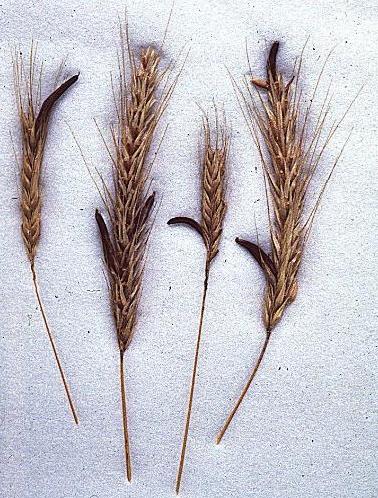Interactions
Secale cereale has many interactions with many
different organisms. One of the main interactions that we humans
think about is that we eat it. It is also frequently utilized as livestock
feed or a rotation crop.
is that we eat it. It is also frequently utilized as livestock
feed or a rotation crop.
The main way that humans consume rye is as bread. There are many different types of rye bread, such as sourdough or marbled, some people actually prefer rye over wheat bread. Rye has many health benefits to humans as well. One of these benefits is that it is incredibly high in fiber, and has other vitamins such as A and Calcium. Rye is also quite commonly made into whiskey.
Another interaction that rye has with other organisms is that it is a host to one of the more distressing human diseases out there, ergot. Ergot or Claviceps purpurea is a fungus that grows on cereal grains. When infected, ergot causes kernels of the infected grain to swell up and turn black. While ergot does steal resources from the host plant, that is not the most pressing issue with humans. If ingested, ergot causes hallucinations, fever, burning sensations, limb death, and finally organ failure and full death. Ergot poisoning is known as St. Anthony's Fire.
Rye is also mutualistic with a fungus called mycorrhizae. Mycorrhizae is found in the roots of rye. In exchange for giving the fungus some of its photosynthesized sugar, the mycorrhizae lives in its roots and increases the surface area there, aiding in more water and nutrients being taken up into the plant. The mycorrhizae helps the rye to such an extent that it is recommended to till mycorrhizae cultures into the soil the first time that rye is planted in a given field.
Alfalfa is a plant that interacts with rye. It can be planted with rye. When being fed to livestock, alfalfa adds to nutrition for the animals.
Continue on to Facts
The picture of the bread and milk came from stock.xchng

